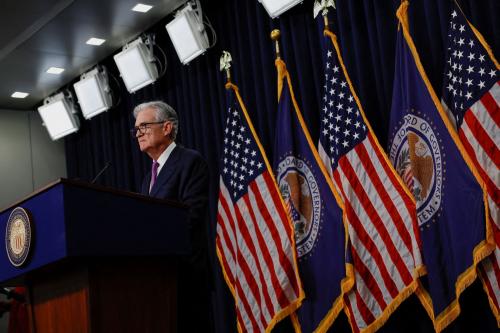The use of annual stress tests to set minimum capital requirements for large banks was among the most important innovations in prudential regulation following the Global Financial Crisis of 2007-2009. Using stress tests for this purpose promised greater risk sensitivity at the individual firm level and a better assessment of the banking system as a whole than the pre-crisis methods of setting fixed minimum capital requirements or using banks’ internal models. A dozen years later, however, the robust stress testing regime that motivated its use for setting capital requirements has been diluted and is now a more routinized, predictable process. As the current Federal Reserve stress tests proceed to conclusion in June, Harvard law professor Dan Tarullo, who oversaw supervision and regulation as a Federal Reserve governor from 2009 to 2017, seeks to prompt a debate on whether stress testing should remain the basis for large bank minimum capital requirements in the U.S.
The advantages of the current approach include (1) stress testing is generally more risk-sensitive than backward-looking, standardized risk weights; (2) unlike capital requirements derived solely from each bank’s balance sheet, stress tests provide a more complete picture of bank resiliency by projecting the impact of an adverse scenario across the industry; (3) more than traditional approaches to setting capital minimums, stress tests can reveal the degree of correlation among asset classes; (4) using stress tests as the basis for setting capital minimums fits well with other post-Global Financial Crisis reforms; (5) stress tests provide information for regulators, banks, and markets. But Tarullo identifies several drawbacks to the way the Fed has used stress tests, including the way it crafted adverse scenarios, the failure to incorporate fire sales and funding stress into the stress-test models, and the reliance on book values of bank assets, as adjusted by generally accepted accounting principles. In short, the case for using stress tests to set capital minimums requires more adaptability and more supervisory discretion. But bank lobbying and institutional factors inside the Fed have significantly constrained the dynamism of stress testing.
One appealing option to the status quo would be for the Fed to administer stress tests in a much more dynamic fashion than it does today. The supervisory model would be regularly updated to reflect modeling advances and regularly adjusted to take account of changes in the composition of bank balance sheets and system-wide holdings of major asset classes. Each year, there would be varying multiple scenarios, some of which would extrapolate contemporary risks (e.g., a big interest rate hike for the 2022 stress test) and others of which would reflect bigger and unpredictable shocks (e.g., a pandemic that shut down large parts of the economy). Tarullo concludes such an approach is unlikely to be adopted and, if it were, would be difficult to sustain.
A more realistic option, he says, would be to decouple the annual stress test required by the Dodd-Frank Act from setting the regular, ongoing capital requirements of large banks. The fixed capital requirements set forth in the Fed’s regulations, which would then be their binding constraint, would be raised for those larger banks. Stress test results could be used to inform both changes in those regulations and possible issuance of directives requiring specific banks to increase their capital ratios because of significant idiosyncratic risks. Among the advantages of this approach are (1) by establishing higher point-in-time capital requirements, it would guard against the diminution of resiliency that comes from the loss of dynamism in stress testing; (2) it should foster more dynamism in stress testing because it would free the tests from institutional and lobbying pressures to dilute them; (3) it would remove many of the institutional inhibitions against conducting an ad hoc, customized stress test in the early stages of a significant shock to the economy or financial system (e.g., a pandemic); (4) information generated would be useful to regulators in establishing minimum capital levels—both generally applicable standards and requirements for a specific bank; (5) decoupling would relieve a good bit of the uncertainty in capital planning faced by banks and investors when the annual stress test changes capital requirements from year to year. The disadvantages include (1) some risk sensitivity would likely be lost in capital requirements; (2) if the Fed relied too much on the capital directive process, the same inertial tendencies that afflicted stress testing might reappear; (3) decoupling stress testing from regular capital requirements would likely reduce the effort now devoted to the exercise by the Fed and banks; (4) there could be confusion around the significance of the stress test results.
Tarullo concludes that decoupling the stress test from ongoing, regular capital requirements would be an admission that the Fed cannot sustain an approach to capital regulation that is forward-looking, dynamic, and macroprudential. He says that if were confident that even a modestly more dynamic version of the status quo be implemented and sustained, he would lean toward it. However, on the basis of stress testing practice over the last five years, he finds himself—with considerable disappointment—approaching the conclusion that decoupling is now the best option.
-
Acknowledgements and disclosures
The Brookings Institution is financed through the support of a diverse array of foundations, corporations, governments, individuals, as well as an endowment. A list of donors can be found in our annual reports published online here. The findings, interpretations, and conclusions in this report are solely those of its author(s) and are not influenced by any donation.





